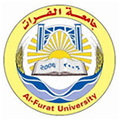آخر الأخبار
الأثر الاقتصادي لتوزيع الكباش المحسنة لأغنام العواس السورية على المربين وزيادة إنتاجية اللحم والحليب
2012, Volume 6, issue 23,pp 350-370| Cite as
The Economic Impact of Improved Rams Distribution on Breeders Awassi and Their Increased Milk/Meat Production
| authors |
Moammar Dayoub,Abdul al Nascr al Omar ,Ayman Debba,Ali Khneifes |
| Abstract |
This study was conducted in 2007 for the first time in Syria to determine the economic performance of improved rams distributed to Breeders. The study was conducted at Hama and Hassakeh provinces using direct field survey on a 40-breeder sample to give a clear and accurate picture on the productivity of improved flock as compared with breeder's flock in terms of meat/milk production. For this purpose, a number of breeders who had records and potential to separate the improved flock from that of non-improved were selected from the study sample. Their possession was estimated to 256 ewes of which 157 for improved flock and 97 ewes for the non-improved one. Milk/meat readings and number of births and their weights were taken for different intervals. Both flocks were given concentrates, barley, hay and field crop residues with an increase of 20% for the improved flock over the non-improved at sample level. The weaning date was at 2 month ages for both flocks. The results have shown an increase 8% in born ewes for the flock using improved rams from GCSAR's centers as compared to the breeder's flock. The increase in births was estimated to 15% for the improved flock. The birth mortality rate dropped from 4.8 to 1.6%. Milk and meat productions per season increased about 23 and 15% respectively. The economic return of using one improved ram impregnating 21 ewes was nearly 38 thousand SP /year, implying the increase of gross animal product value at country level. Key words: economic impact, improved Awassi rams, technologies, milk/meat productions |
| الكاتب |
معمر ديوب , علي خنيفس , عبدالناصر العمر , أيمن دبا |
| الملخص |
نُفذت هذه الدراسة خلال عام 2007 لأول مرة في سورية بغية معرفة الأداء الاقتصادي لإدخال تقانة الكباش المحسنة لسلالة العواس على قطعان المربين والتعرف على إنتاجية قطعان الأغنام المحسنة مقارنة بقطعان المربين من حيث إنتاج اللحم والحليب. أجريت الدراسة بطريقة المسح الميداني المباشر على عينة بلغ قوامها 40 مربياً في محافظتي حماة والحسكة. تمّ اختيار مجموعة من المربين ضمن العينة المدروسة ممن يملكون سجلات ولديهم إمكانية لعزل القطيع المحسن عن القطيع غير المحسن. بلغت حيازتهم 254 نعجة منها 157 نعجة للقطيع المحسن و97 نعجة للشاهد، وأخذت قراءات اللحم والحليب وعدد المواليد وأوزانها لفترات مختلفة. عوملت القطعان بذات ظروف الرعاية وبزيادة بلغت 20% من الأعلاف للقطيع المحسن مقارنة بالشاهد على مستوى العينة. أظهرت النتائج زيادة في نسبة النعاج الوالدة بلغت 8% للقطيع الذي استخدمت فيه الكباش المحسنة من المراكز البحثية مقارنة بقطيع المربي, وكذلك زيادة في المواليد بلغت 15% للقطيع المحسن في حين انخفضت نسبة النفوق للمواليد من 8.4% إلى 6.1%. وكانت زيادة إنتاجية الحليب بحدود23% في الموسم، واللحم بحدود 15%. بلغ العائد الاقتصادي من استخدام الكبش المحسن الواحد حوالي 38 ألف ليرة سورية سنوياً وعند تلقيحه لـ21 نعجة، مما يساهم في زيادة قيمة الناتج الحيواني المحلي العام على مستوى القطر. الكلمات المفتاحية: الأثر الاقتصادي – كباش عواس محسنة - تقانات – زيادة إنتاج اللحم والحليب. |














